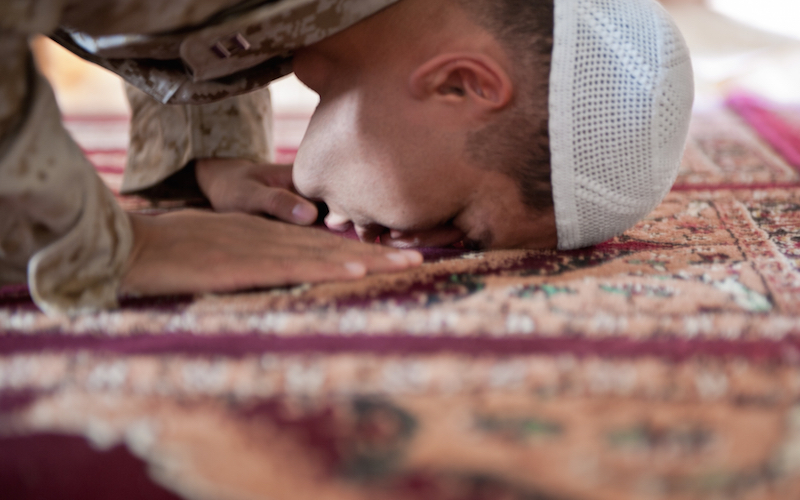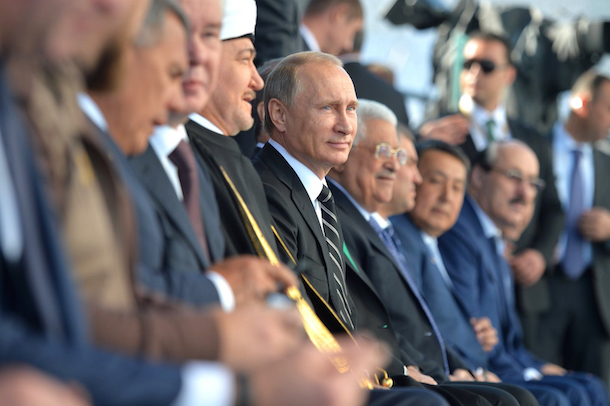
Islamophobia: What America can Learn from Russia
“I think Islam hates us.”
With this perturbing quote, US Presidential candidate Donald Trump underscored an increasingly salient issue in the United States: Islamophobia. After the recent Paris attacks, many American Muslims expressed the view that discrimination against Muslims is worse than after 9/11. Recent polls show that three in five Americans have an unfavorable view of Islam. This growing tide is wholly contradictory to a bedrock of America’s history and the constitution’s religious freedom. How can America create more routes for tolerance?
Surprisingly, one route to combatting Islamophobia may come from a country that is often referred to as America’s greatest foe: Russia. Americans now view Russia more negatively since the end of the Cold War. The Russian President, Vladimir Putin, is seen favorably by less than one in five Americans. Yet despite Russia being overwhelmingly Russian Orthodox, a conservative branch of Christianity that, for instance, is ardently anti-gay, Russia is more tolerant of Muslims than the United States. Polling indicates that there is a higher acceptance of Islam than in the United States, and while some politicians may run on xenophobic platforms, these politicians are strictly not Islamophobic. In recent years, Moscow has even vetoed a planned Islamophobic rally, citing unity and the public’s will. This isn’t to paint an unduly rosy picture of Islamophobia in Russia: more than 40% of Russians have an unfavorable opinion of Islam and many outside observers are concerned about the growing number of Russians joining the Islamic State.
But if anything, one would expect Russia to be even more Islamophobic. While outsiders perpetrated the 9/11 attacks in the United States, many attacks in Russia, including the 2004 Beslan school siege that resulted in the deaths of 150 adults and 180 children, were perpetrated by ingrown groups, specifically Muslim Chechens.
Between 2001 and the present day, there were more than 110 terrorist attacks on Russian soil, killing 1,800 people. Almost all of these attacks were committed by people reported to be Muslim. Moreover, the recent terrorist attack by the Islamic State that resulted in a Russian plane crash in the Egyptian Sinai should have increased Russian Islamophobia. So how could Russia withstand so many attacks by people claiming to be Muslim and still not be pervasively Islamophobic?
The primary reason can be explained by the publicized tolerance of top Russian government officials. From the beginning of Vladimir Putin’s presidency, Putin made engagement with Russian Muslims one of his administration’s priorities, exemplified by the president’s visit to the Maykop’s mosque at the beginning of Ramadan in 2002. Both Putin and Medvedev regularly visit mosques while President Obama’s first visit to a mosque was in February of this year. Similarly, Putin often wishes Muslims well during Islamic holidays such as Eid al-Adha, often quoting verses from the Quran.

At the Moscow Cathedral Mosque in light of the Eid holiday, Putin said, “I’m confident that the Cathedral Mosque will help unite the efforts of not solely the Muslims, but also the adherents of other faiths, in the name of good deeds.” He was similarly quoted in 2013 saying that Islam, along with other religions, is integral to Russian heritage. The Russian government also hosts conferences like the 2009 Russia and the “Islamic World: a partnership for stability,” during which the former mayor of Moscow, Yury Luzhkov, emphasized the importance of Muslim integration in Russia and criticized the US for its treatment of Islam as the religion of terror.
A secondary reason is the relatively high interaction non-Muslim Russians have with Muslim Russians. While only about one in a hundred Americans is Muslim, almost one in five Russians is. This means that the average Russian citizen is much more likely to interact on a day-to-day business with Muslims. Increased interactions leads, generally, to more tolerance. Additionally, greater tolerance for Islam in Russia is formed during the early stages of child development. Starting in September of 2012, the Russian government mandated that elementary schools must offer a course on Fundamentals of Religious Cultures and Secular Ethics, while the world history and social science curriculum of Middle and High School covers the origins and basic principles of Islam.
Following Russia’s example, to decrease Islamophobia and increase tolerance, more American government officials should make showings of tolerance and respect towards Islam, and schools should focus on promoting interactions between Muslims and non-Muslims. Instead of President Obama visiting a mosque, if the United States is truly committed to combatting Islamophobia, the Senate and House majority and minority leaders should attend as well. To increase the frequency of interactions between Muslims and non-Muslims, perhaps school districts should look at whether they can institute mosque-visits, or whether they can bring in leaders of all different faiths to give panel discussions on religion.
The rise of the Islamic State is partially attributed to the growing number of foreign fighters joining the terrorist organization. Many of the recruits are young Muslims who failed to successfully integrate into their respective communities and were radicalized by the simplified promises offered by Islamic fundamentalism. While Russia is not an extremism-free country, there is much the United States can learn from its practices and policies. Preventing the ostracizing of Muslim Americans in the US, which is the likely outcome of Donald Trump’s rhetoric, should be prioritized by the US government and educators in order to maintain an inclusive and tolerant society.


